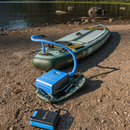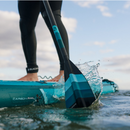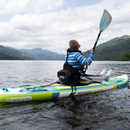How to Choose a Paddle Board: A Beginner Guide

If you’re on hunt for an exciting outdoor activity that combines fitness, relaxation, and adventure, look no further than stand up paddle boarding. This water sport has been captivating outdoor enthusiasts for years, and with good reason. But with so many brands, designs, and models available, choosing the perfect paddle board can be super overwhelming for beginners. However, with a little guidance, the process of how to choose a paddle board can become much more straightforward. We are here to help you determine which paddle board best suits your unique style and preferences.
The essential factors to consider when buying your first stand up paddle board include weight and size, your skill level, how you’ll use your board, and quality.
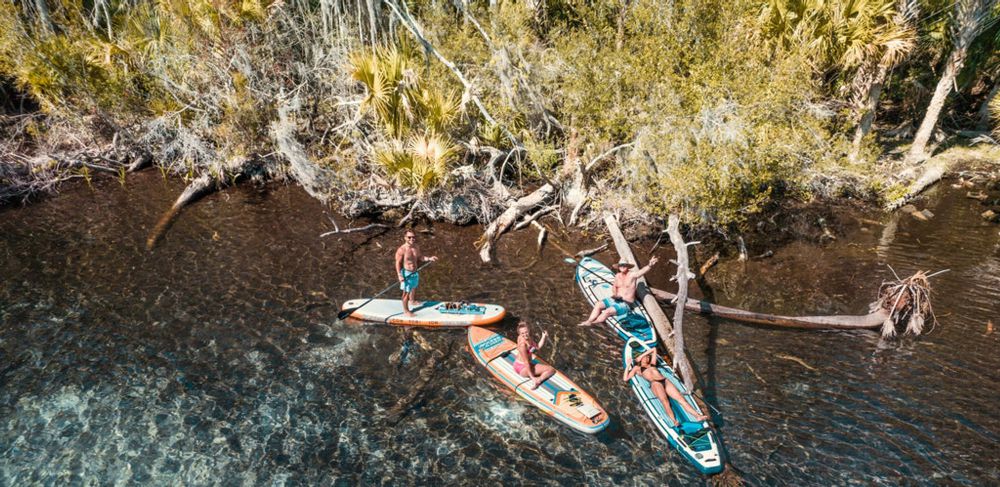
How to Choose A Paddle Board?
Our comprehensive paddle board buying guide below will outline the key decision points you need to evaluate on how to choose a paddle board. Evaluating these elements carefully will help you find the perfect “mate” that meets your specific needs and preferences.
Weight & Size
First things first, consider your height and weight when choosing a paddle board to ensure it can support you securely while standing.
- Size Volume: The board's volume is measured in liters. This volume specification provides insights into the board's weight-carrying capacity - the higher the volume, the more weight the paddle board can support.
- Weight Capacity: Every paddle board has a specified weight limit and is measured in pounds. By understanding this weight capacity, you can prevent the board from sitting lower in the water, thus reducing its efficiency and making it harder to paddle. Therefore, you should consider both your body weight and the weight of any gear you'll bring on your paddle board trip.
It's also good to think about whether it will be just you on your board or if you plan to paddle with another rider, child, or additional cargo. This will help determine the weight capacity of the board you need. Our BLACKFIN boards offer the highest weight capacity of any SUPs, perfect for those bringing additional paddle board fishing accessories or camping gear.

Width
The next thing you need to consider about how to choose a paddle board is the width. The right board width can significantly impact your overall experience and comfort level on the water.
- Body type: In general, if you're a smaller person, a narrower board will help you easily find your balance on a more compact SUP. Conversely, if you have a larger build, a wider board will provide the necessary stability and weight support. In contrast, putting a smaller individual on a board that is too wide for their frame can result in an inefficient paddling stroke. They will have to awkwardly reach out to the sides to get their paddle in the water.
- Transport and storage: If you plan to embark on longer tours and need to carry extra gear like a cooler or camping equipment, a wider board will offer more valuable storage space. This can be especially beneficial if you're transporting your SUP on the roof of your vehicle.
- Balance and stability: Wider boards range about 31 inches or more and provide a stable platform well-suited for SUP yoga activities. On the other hand, narrower boards tend to be faster and more maneuverable, so they are a popular choice for racers and surfers.
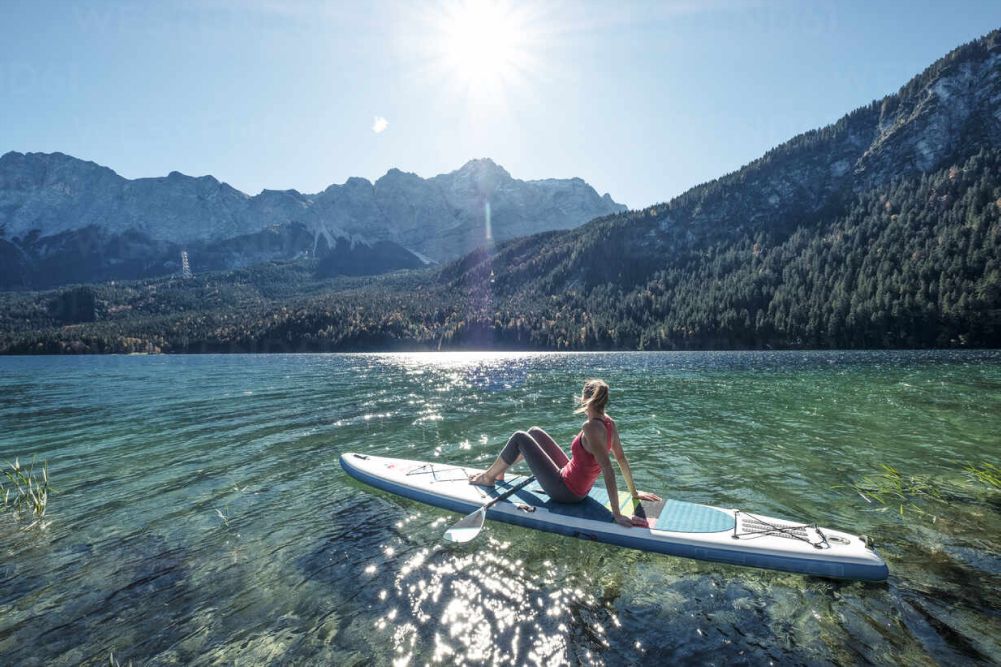
By taking these factors into account, you can know how to choose a stand up paddle board with the perfect width for a comfortable and enjoyable paddling experience.
Length
When learning how to choose a paddle board, one of the key factors to consider is the length of the board. Below are several primary intended uses you should consider when determining the ideal length of SUP to purchase:
- Short board: For those looking to surf or paddle with kids, short boards under 10 feet are often the ideal choice. These boards typically have a planing hull, making them highly responsive and easy to turn.
- Medium board: Medium-sized boards ranging from 10 to 12 feet are considered suitable for a variety of uses including SUP yoga. Many of these boards also feature planing hulls, but some displacement-hull designs can be found in this length range as well.
- Long board: At the longer end of the spectrum, boards 12'6" and above are excellent for fast paddling and long-distance touring. Most boards in this size range have displacement hulls, allowing them to track straighter and maintain higher speeds. If your primary goals are speed and endurance, a longer paddle board is likely the best choice.
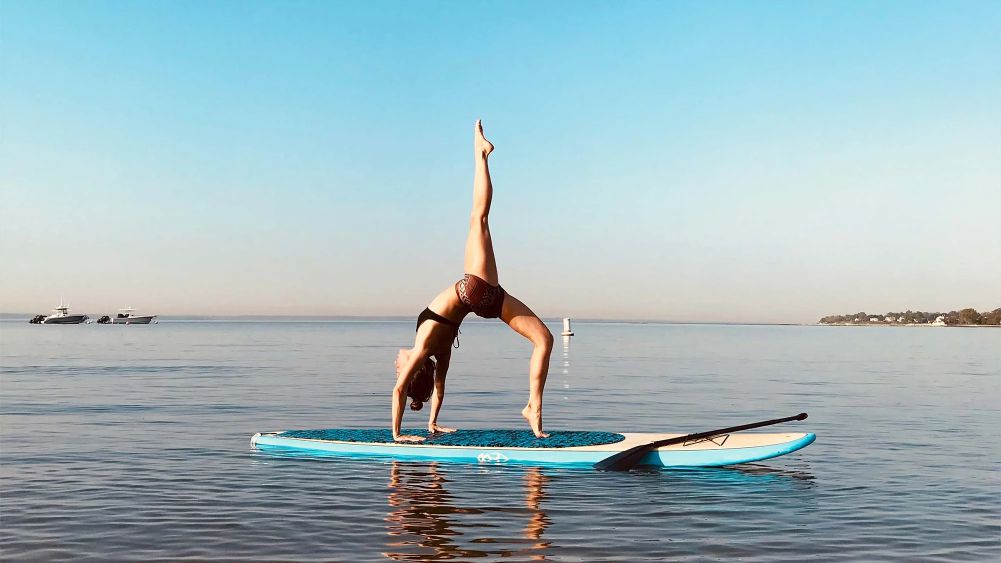
Fins
When researching how to choose a paddle board, the fins is the factor that a smart paddler cannot ignore. Quality fins can make a significant difference in your overall paddling experience.
There are several common fin configurations to consider when choosing a stand up paddle board:
- Single Fin: A common feature of many SUPs is a single fin positioned within a finbox and secured using a nut and screw. The fin box has a channel that allows the fin to slide back and forth. The single fin design provides good tracking and minimal drag, making it a great choice for flatwater paddling.
- Twin Fins: Some paddle boards feature a twin fin setup, with two smaller fins positioned towards the back of the board. This configuration can enhance maneuverability while still offering good tracking performance.
- Three-Fin: Also known as a "thruster", this three-fin arrangement promotes straight tracking on flatwater and provides good control when surfing. All three fins are typically about the same size in this setup.
- Removable vs. Fixed Fins: Beyond the number and size of the fins, you'll also want to consider whether the fins are removable or fixed in place. Removable fins offer more flexibility, while fixed fins provide a more streamlined, low-profile design.
-
Fin Box types: If you are choosing a paddle board, the type of fin box is also your top concern. Common fin box options include:
- Channel Fin Box: Allows the fin to slide back and forth, providing good tracking and stability.
- Screw-in Fin Box: Offers a more secure, locked-in fin attachment, often found on performance-oriented SUPs.
- Flush Fin Box: Creates a smooth, seamless transition between the fin and board to reduce drag.
- Twist-Lock Fin Box: Enables tool-free, convenient fin installation and removal.
SUP Hull Types
It's important to consider how you plan to use the board when choosing a paddle board. Therefore, paddlers should select the hull type that best matches the intended activities and performance needs. Beginner paddlers can enjoy both planing and displacement hull shapes, but there are distinct differences that make them better suited for certain activities.
- Planing hulls: They are flat and wide, similar to a surfboard. Planning hulls can allow the board to ride on top of the water and be highly maneuverable. This makes them a good choice for leisure paddling, surfing, SUP yoga, and whitewater use.
- Displacement hulls: This hull type has a pointed nose or bow that slices through the water, pushing it to the sides. This efficient design requires less effort to paddle, enabling faster speeds and longer distances. However, they are generally less maneuverable than planing hulls. Displacement hulls are popular for fitness paddling, touring/camping, and racing.
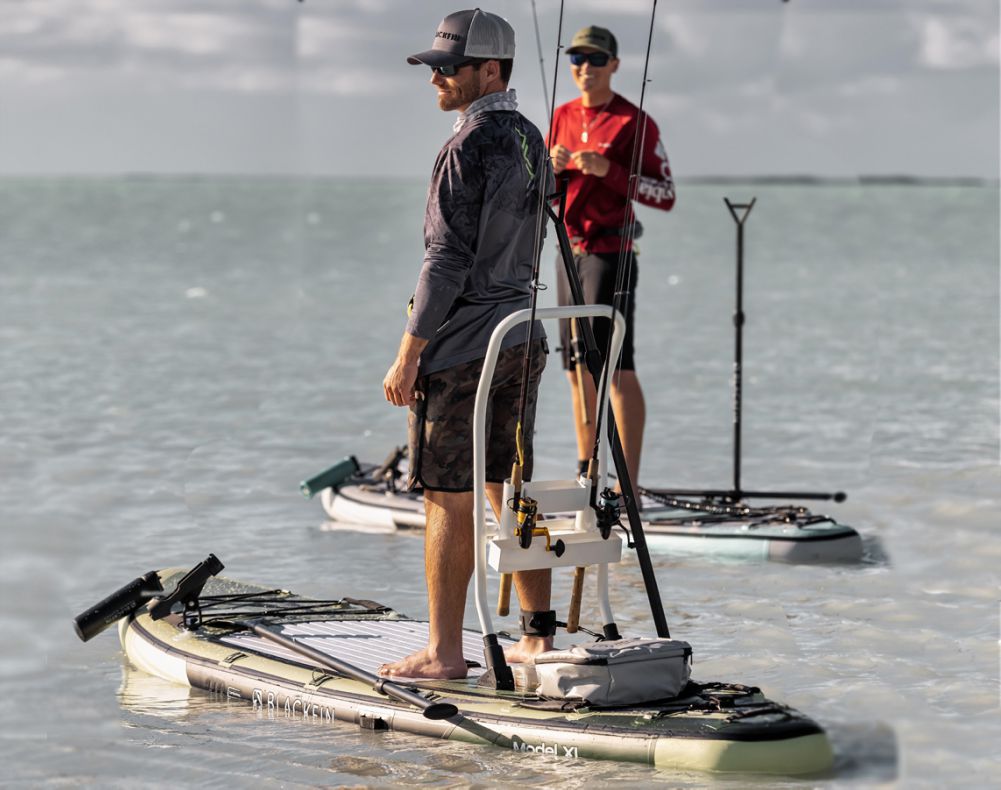
Skill Level
Your skill level and comfort in the water are also other vital factors that should be considered when choosing a paddle board to find out the most appropriate fit.
- For Beginner: Choose a wider board with more volume to provide better stability and make it easier to stand up and balance. An extra-wide board in the 33-34 inch range, like the CRUISER model, is an excellent option for beginners seeking a stable and secure platform
- For Intermediate: As your skills progress, you can transition to a narrower board with less volume. This will allow for improved speed and maneuverability on the water.
- For Advanced: Experienced paddlers may prefer the most streamlined, high-performance boards. These will typically have a narrower width and lower volume, prioritizing speed and agility over primary stability.
“Steady, stable, and secure” – the CRUISER is the perfect paddle board for beginners. Featuring an extra-wide 33-34" base and a broad, forgiving tail, this board is engineered to provide unwavering stability and confidence, even for first-time paddlers. With innovative stability-enhancing features packed into its design, the CRUISER offers a rock-solid platform that will have you standing tall and gliding smoothly across the water.

Ease of Use
One primary factor to contemplate when choosing a paddle board is its user-friendliness. Paddle boards are available in a wide range of shapes and sizes in order to cater to different paddling activities and preferences. Consider your intended use and environment - a broader, more stable board like the CRUISER ULTRA™ may be ideal for calm waters and activities like SUP yoga. Meanwhile, a narrower model could offer better maneuverability for surfing or choppy conditions. Below are a few key factors to help you evaluate:
- Carrying handles: Looking for boards with well-placed, durable carrying handles that make it easy to transport the SUP from your vehicle to the water. Convenient handles can significantly improve the portability and user-friendliness of the board.
-
Extra and accessories:
- PFD: A PFD or life jacket is an essential accessory that can be a literal lifesaver in the event of an unexpected capsize or emergency.
- Proper Clothing: Wearing appropriate clothing for the weather and water conditions is also crucial. Moisture-wicking fabrics, water shoes, and sun protection can keep you comfortable and focused.
- Leash: A reliable leash is a must-have accessory that attaches your paddle board to your body. This simple yet vital piece of equipment prevents your board from drifting away if you fall off, ensuring you can easily remount and continue your paddle.
Another crucial factor related to “how to choose a paddle board” concern is considering the locations where you'll be paddling. For those paddling locally, certain board designs may suffice. However, if your plans involve travel, whether by plane or road trips, an ultra-compact and lightweight option from the ULTRA™ Series could be the optimal choice. These boards pack down into a streamlined backpack, making them incredibly portable and convenient for adventuring with your SUP.
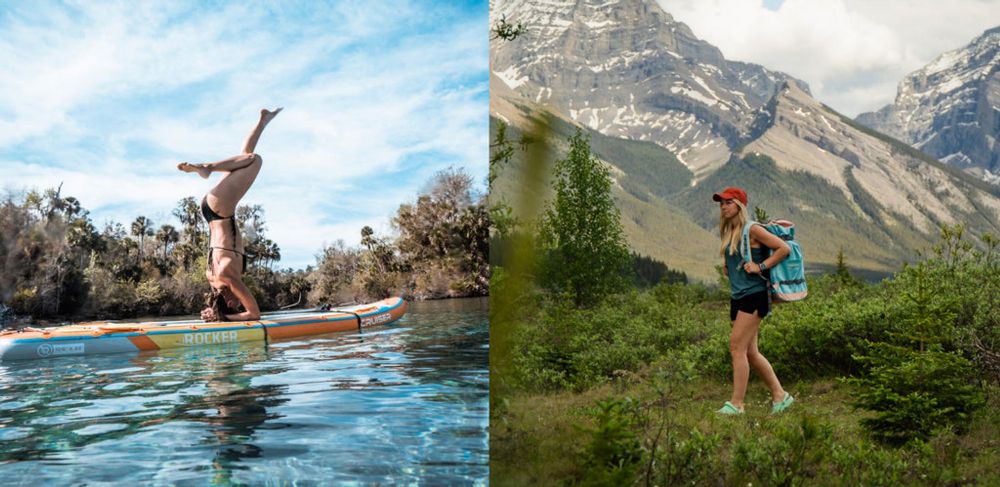
Quality
While hard paddle boards were once the only option, the rise of durable, lightweight inflatable paddle boards has revolutionized the sport. When considering how to choose a paddle board, paddlers should prioritize quality construction for lasting performance. Boards made with premium materials like epoxy, fiberglass, and carbon fiber or sturdy PVC-based options. For the utmost in rigid, durable construction, the BLACKFIN boards with unparalleled triple-layer PVC composite and built-in carbon rails are a good choice. Still, proper maintenance is the real key to ensuring years of enjoyment on the water. On top of that, paddlers should consider carefully the intended use, conditions, and personal needs to find the perfect paddle board.
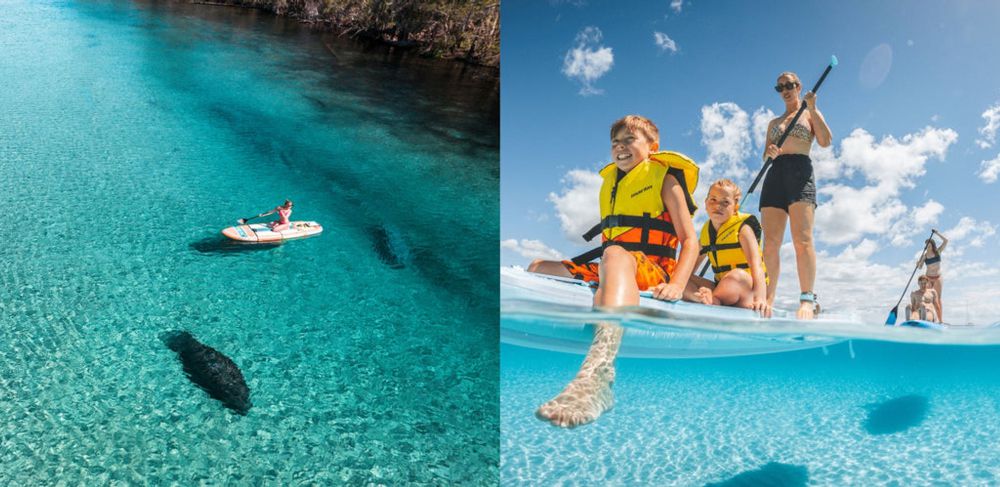
They offer a reliable and fun introduction to the sport without requiring a major upfront cost.
- For medium to higher weight paddlers or those looking to bring extra cargo, we recommend choosing between iROCKER and BLACKFIN.
- For paddlers looking for the convenience of a lightweight board in a smaller package, select ULTRA™.
- For paddlers seeking a premium option with maximum versatility, speed, and stability no matter your skill level, select BLACKFIN.
The best news is you can never have too many paddle boards. So, as you grow more confident and progress your skills, you can take on new challenges with different sizes and shapes of boards.
Paddle Board Types: Soft Top, Inflatable, and Hard Ones
Regarding the guide on how to choose a paddle board, there are several main types for paddlers to consider, each with its own unique advantages and drawbacks.
1. Soft top paddle boards
- Pros: Soft top paddle boards are often the most affordable option on the market. Their dog-friendly construction and stability make them well-suited for use by families and beginners. The soft top design makes these boards ideal for SUP yoga and fishing activities.
- Cons: Soft-top paddle boards tend to be heavier than other varieties and may offer a different level of speed and maneuverability.
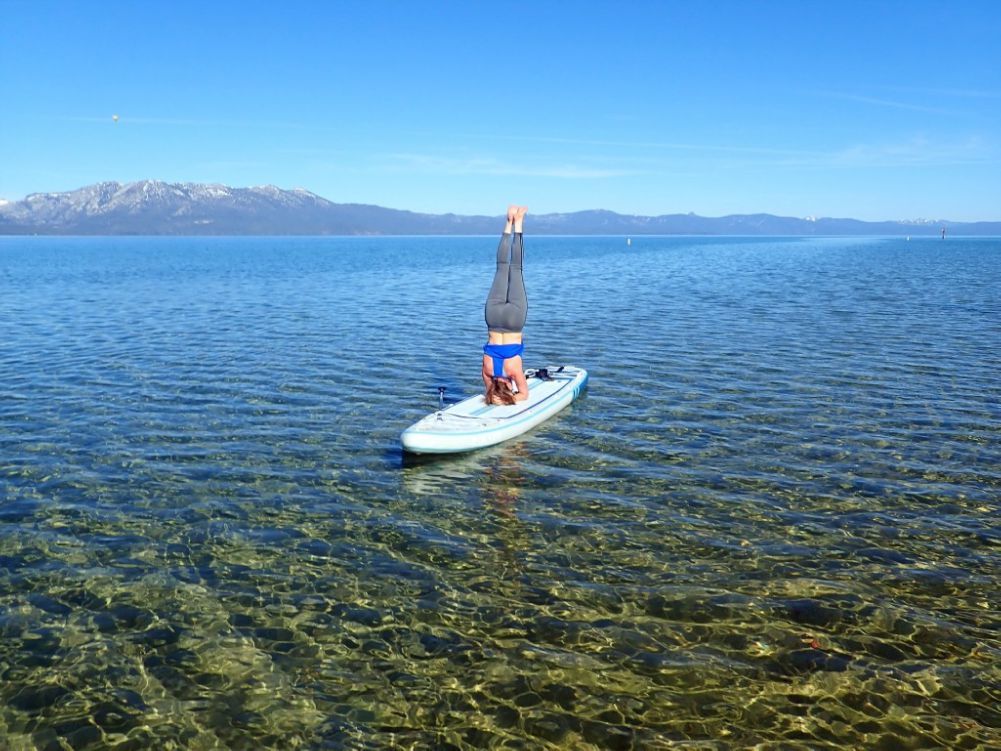
2. Inflatable paddle boards
- Pros: Inflatable paddle boards are highly portable and easy to transport even on airplanes or boats. They provide a softer surface, which is very suitable for beginners and children. Additionally, their durability allows them to withstand rocky shores and river paddling, making them an ideal choice for adventurous paddlers or those who wish to take their pups along.
- Cons: Inflatable paddle boards may not maneuver or respond as quickly as hard-shell fiberglass boards. Despite their rigidity when properly inflated, they still cannot match the rigidity of a fiberglass board. Additionally, high-quality inflatable SUPs can be pretty expensive compared to fiberglass boards. Moreover, some users may experience flex or sinking in the middle of the board if not properly inflated.
3. Hard paddle board
- Pros: Several advantages include faster transition time from car to water, better performance for SUP racing, and excellent suitability for surfing. In addition, hard paddle boards provide increased glide and speed due to their sleek design and rigidity.
- Cons: They are heavier than inflatable models, which can make transportation more challenging. They are also more susceptible to dents or cracks in their fiberglass construction, and repairs often require professional assistance. Due to their bulky size and weight, transporting these boards can be a hassle whether on a car or plane.
SHOP ALL SUPS
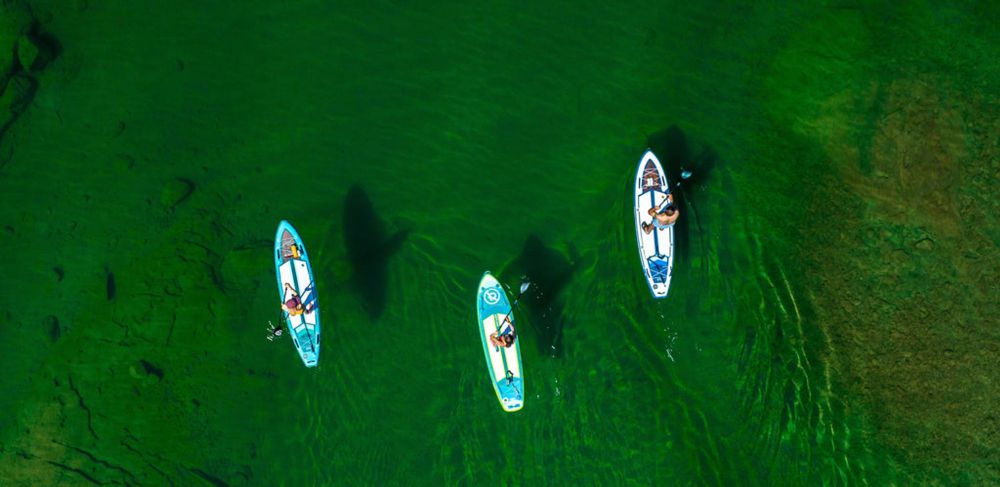
If you're wondering how to choose a paddle board that will become a lifelong companion, look no further than our Beginner Collection - we offer the most ideal board for those needing a sweet accessories.




